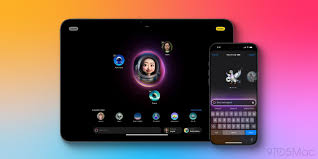The rollout of Apple Intelligence has been slow, halting and steady since the company first revealed its thoughts on AI at WWDC this year. That continues today with the release of the latest developer betas for iOS 18, iPadOS 18 and macOS Sequoia. Updates to iOS 18.2, iPadOS 18.2 and macOS Sequoia (15.2) bring long-awaited features like Genmoji, Image Playgrounds, Visual Intelligence and ChatGPT integration for those running preview software, as well as Image Wand and more writing tools for iPads.
This follows the announcement that iOS 18.1 would be available to the public as a stable release next week, bringing things like writing tools, Notification Summary and Apple’s listening test to the general public.
This is the first time for those who haven’t opted for the beta software to check out Apple Intelligence, which the company has widely promoted as a key feature for the devices it launched this year. For example, the iPhone 16 series was billed as phones designed for Apple Intelligence, though they launched without those features.
Now that the next set of devices is ready for developers, it looks like we’re just weeks away from rolling them out to the public. For those who are already on the developer beta, the update will arrive automatically.
As always, a word of caution: If you’re not already familiar, beta software is meant for users to test new features and often check for compatibility or issues. They can be buggy, so always back up your data before installing the preview. In this case, you’ll also need to have an Apple developer account to gain access.
Genmoji is coming today
Today’s update adds Genmoji, which lets you create custom emojis right from your keyboard. You’ll go to the emoji keyboard, tap the Genmoji button next to the description or search input field, then enter what you want to create.
Apple Intelligence will generate a few options, which you can swipe through and send. You’ll also be able to use them as tapback reactions to other people’s messages. Plus, you can create Genmoji based on your friends’ photos, making them more accurate Memoji. Since these are all rendered in emoji style, there won’t be a risk of them being misinterpreted as real photos.
Apple is also releasing a Genmoji API today so that third-party messaging apps can read and render Genmoji, and people you text on WhatsApp or Telegram can see your hot new gym rat emoji.
Other previously announced features like Image Playground and Image Wand are also available today. The first is a standalone app and something you can access from the Messages app via the plus button. If you view Messages, the system will quickly generate some suggestions based on your conversation.
You can also write a description or choose a photo from your gallery as a reference, and the system will render an image that you can then alter. To prevent confusion, there are only a few art styles available: Animation or Illustration. You won’t be able to render photorealistic pictures of people.
The Image Wand is also arriving today as an update to the Apple Pencil tool palette, which will help turn your poor sketches into even better artworks.
ChatGPT integration for Siri and writing tools
As announced at WWDC, Apple is bringing ChatGPT to Siri and writing tools, and every time your request can be well-accomplished by OpenAI’s tools, the system will suggest going there. For example, if you ask Siri to create a travel itinerary, workout routine, or even meal plan, the assistant might say it needs to use ChatGPT to do so and ask for your permission. You can choose whether the system asks you every time you visit GPT or bring up these requests less frequently.
It’s worth reiterating that you don’t need a ChatGPT account to use these tools, and Apple has its own agreement with OpenAI so that when you use the latter’s services, data like your IP address won’t be stored or used to train models. However, if you connect your ChatGPT account, your content will fall under OpenAI’s policies.
On the other hand, Apple Intelligence will also show that you can compose with ChatGPT within the writing tool, where you’ll find things like rewrite, summarize, and proofread. This is another area that’s being updated with the developer beta – a new tool called “Describe your change.”
It’s basically a command bar that lets you tell Apple what you want to do to your writing. For example, “make it more upbeat” or “check it for grammatical errors.” Basically, this will make it a little easier for the AI to edit your work, since you won’t have to go into different sections to proofread or summarize, for example. You can even have it do things like “turn this into a poem.”
